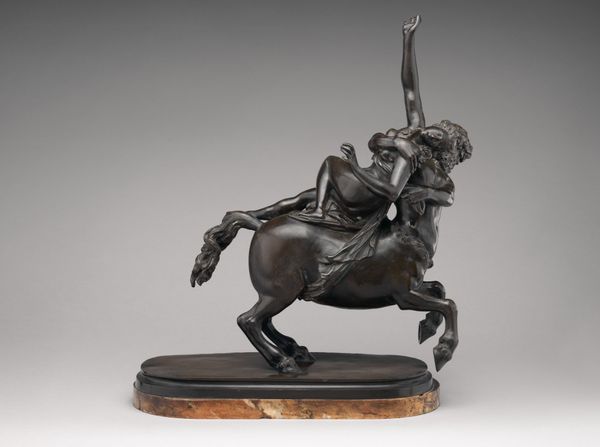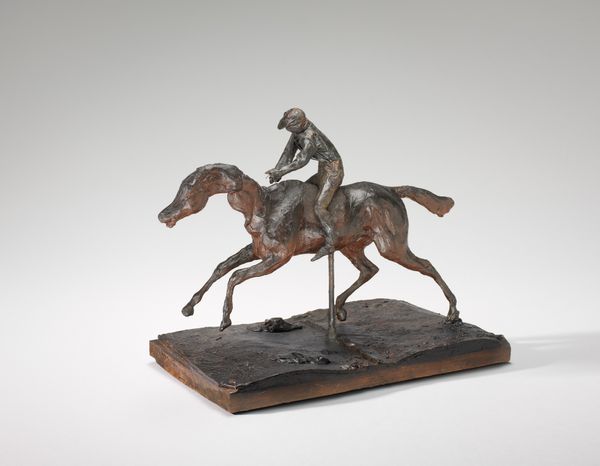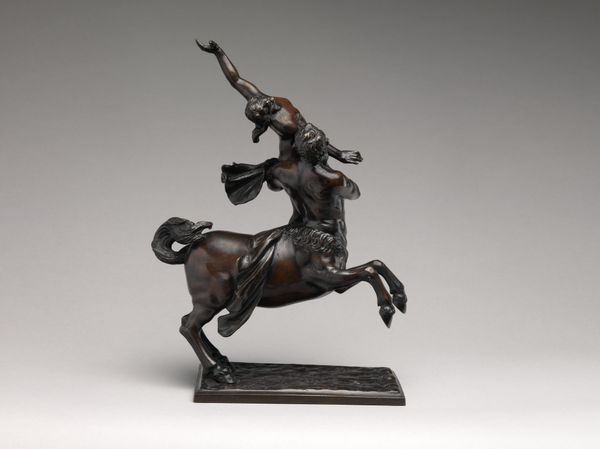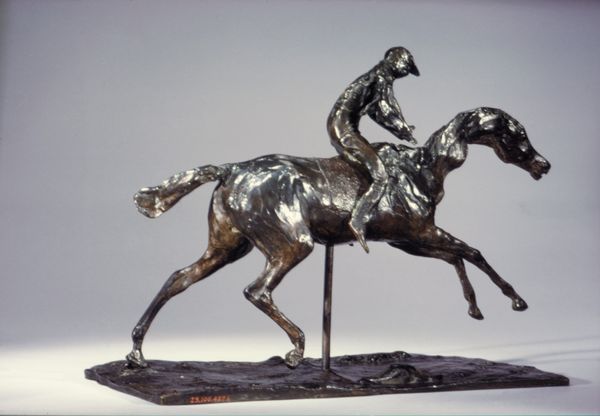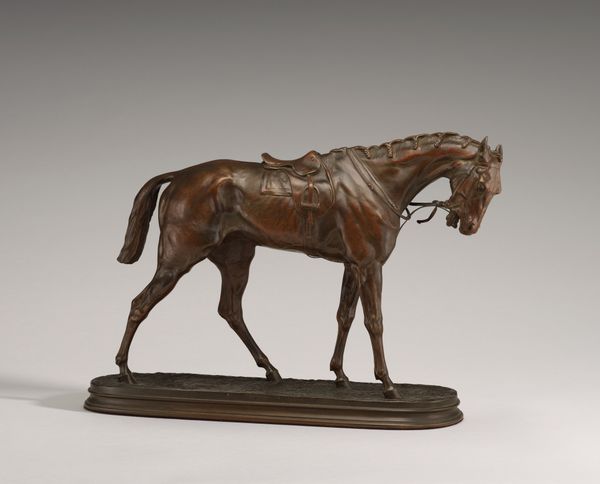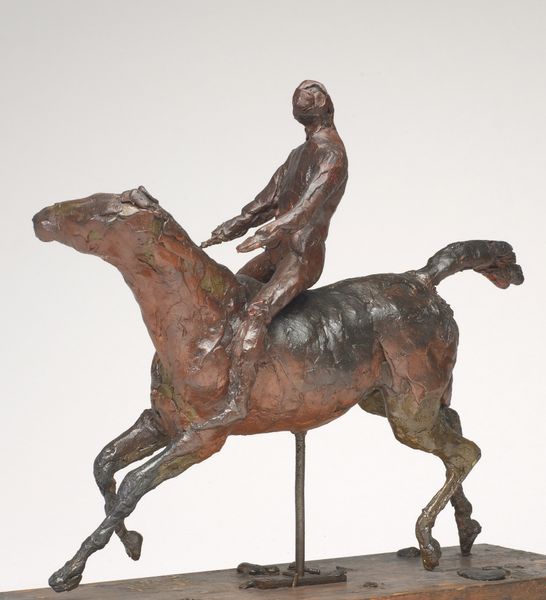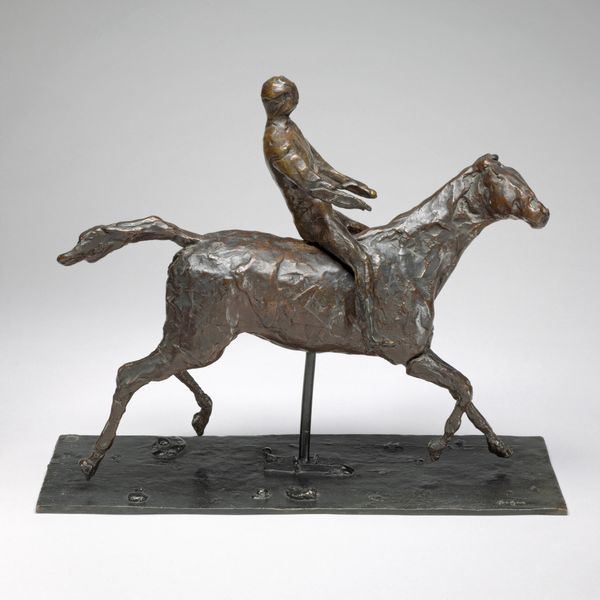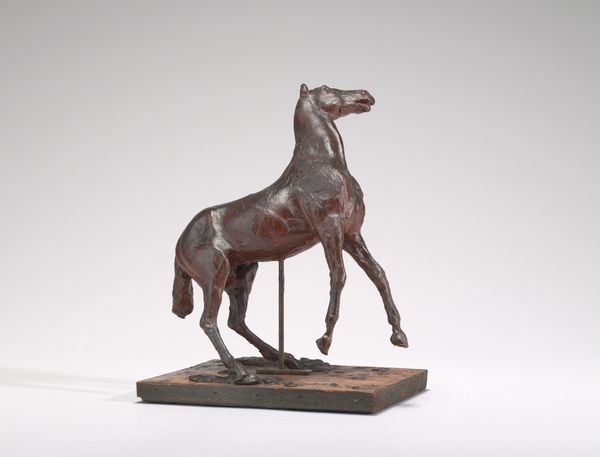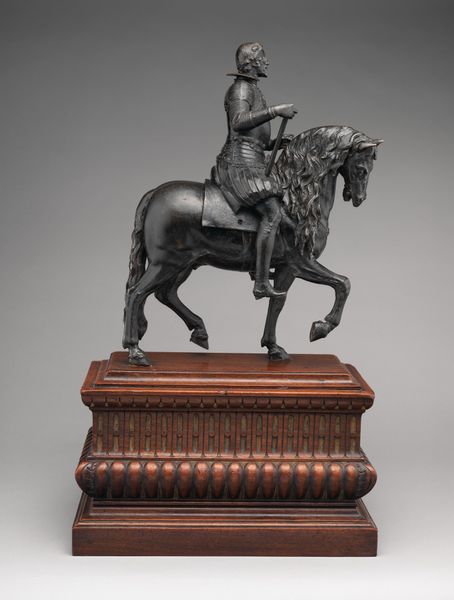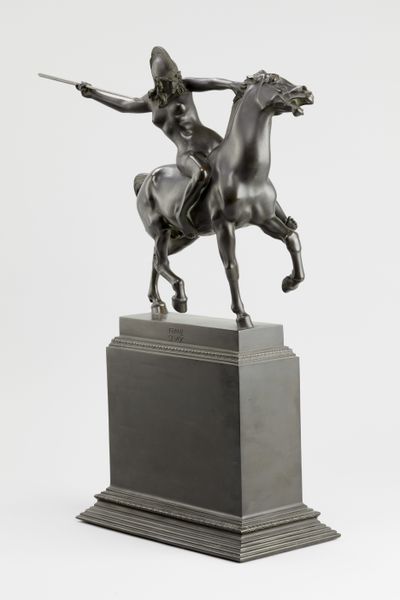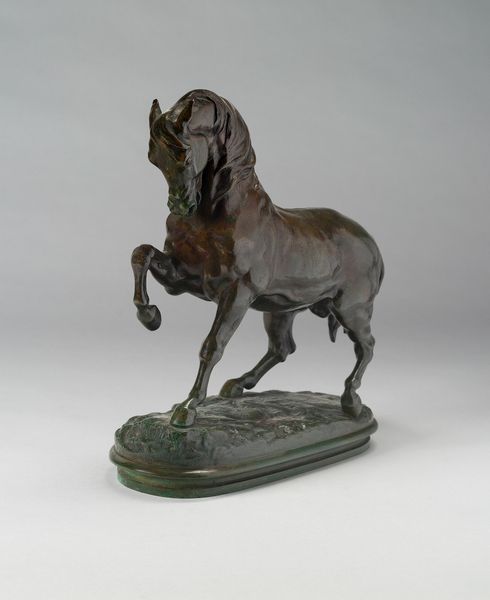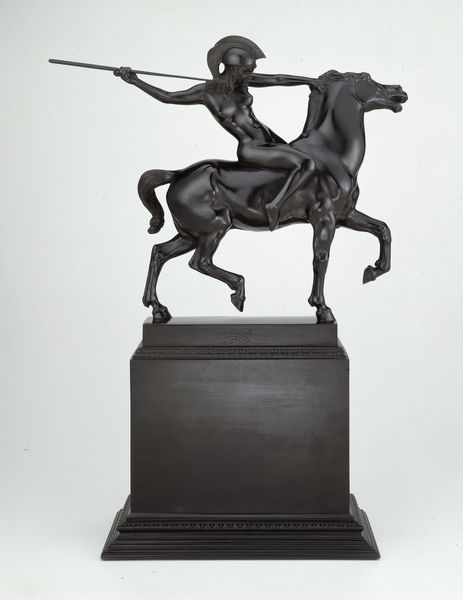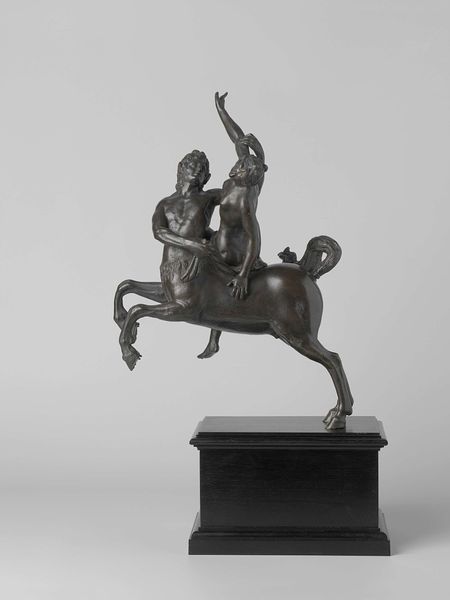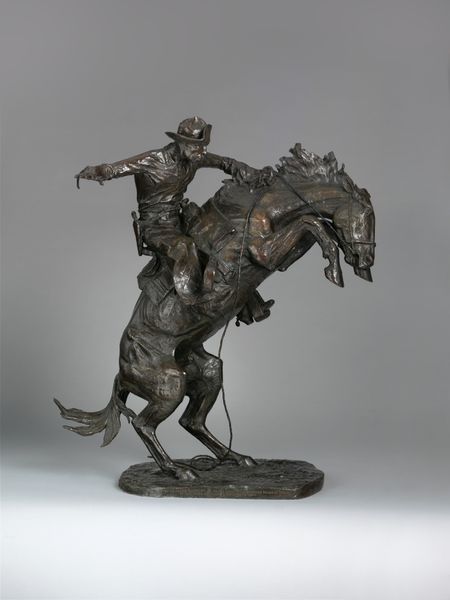
bronze, inorganic-material, sculpture
#
statue
#
3d sculpting
#
3d model
#
allegory
#
baroque
#
sculpture
#
bronze
#
3d character model
#
sculptural image
#
figuration
#
unrealistic statue
#
sculpting
#
inorganic-material
#
sculpture
#
italy
#
3d character modeling
#
3d concept
#
statue
Dimensions: H. 21 cm (8 1/4 in.); base: 17.2 × 10.2 cm (6 3/4 × 4 in.)
Copyright: Public Domain
Curator: Here we have "Centaur Abducting a Nymph," a bronze sculpture created around 1650 by Francesco Fanelli, currently residing at The Art Institute of Chicago. Editor: My first reaction is that this work looks chaotic and rather disturbing. There's a sense of violent motion frozen in time. The figures are intertwined in a way that seems less about romance and more about power. Curator: Indeed. It's a fascinating piece representative of the Baroque period in Italy. Fanelli, of course, served as sculptor to the English court. Consider the broader cultural context of these mythological subjects; they weren’t just decorative, but potent political metaphors too. The placement in noble households conveyed very specific messages. Editor: Exactly, this isn't just pretty ornamentation; it’s a narrative steeped in unequal power dynamics, particularly between men and women. Nymphs are almost always depicted as vulnerable, passive beings subjected to the desires of gods and mythical creatures. This artwork plays into, and reinforces, that tradition. Is the centaur’s act abduction or assault? The title certainly romanticizes it. Curator: And how would the audiences have understood these myths? Were they questioning, for example, patriarchal structures through them? I am skeptical. But yes, this work would seem to participate more directly in constructing rather than critiquing such structures. Editor: I think you're right, but even today it forces us to think about how such stories still resonate, even if subconsciously, influencing contemporary attitudes about gender and consent. Does this sculpture glamorize control and domination? How does the male gaze affect not only the way the scene is sculpted but also the way it is perceived by viewers across the centuries? It's troubling and evocative. Curator: Art like this compels us to reconsider the narratives it conveys. And by displaying the sculpture today, museums open up historical context to current, evolving understandings of the stories it tells. Editor: It certainly encourages a conversation, one that challenges us to see how classical mythology continues to echo, demanding critical interpretation and proactive questioning. I will not be able to dismiss it so quickly!
Comments
No comments
Be the first to comment and join the conversation on the ultimate creative platform.
